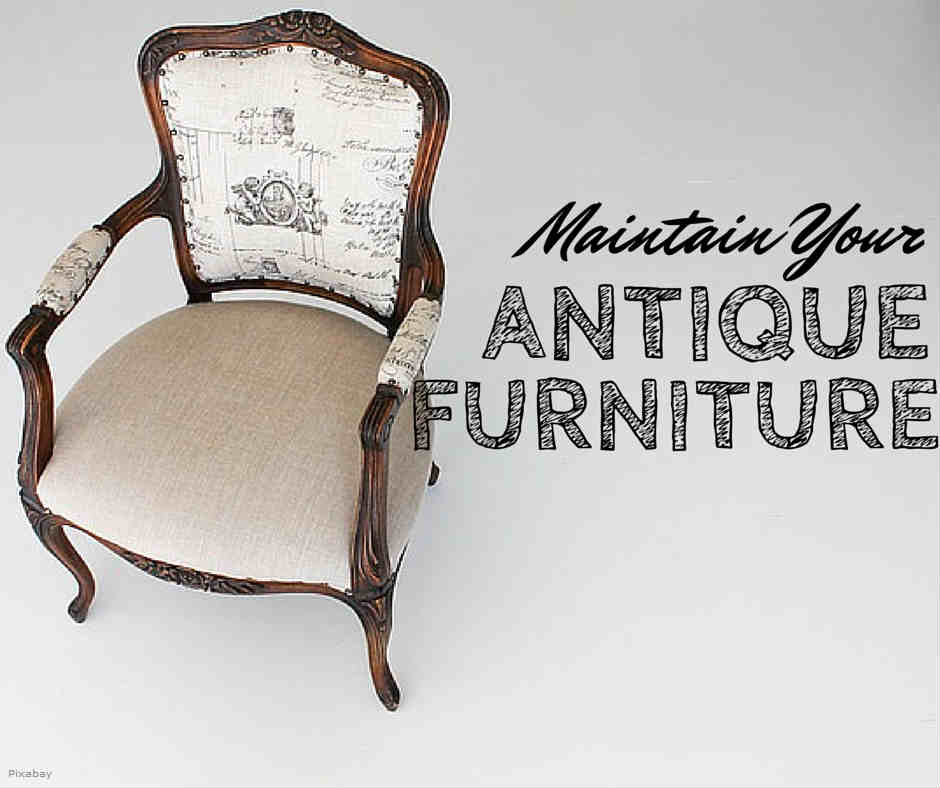Antique furniture can be an investment in your home, it not only adds style but the individual pieces can be valuable on their own. Taking proper care of your antique furniture is crucial for those items to maintain their value. Read on for tips on how to care for your beloved antique furniture items.

Environment
Because antique furniture is very delicate, one of the first steps to take when protecting it is to carefully choose where to place it in your home. Ultraviolet light from the sun can degrade finishes and fabrics on antique furniture. Do your best to keep your antiques out of direct sunlight either with curtains to diffuse the light or just out of direct sunlight entirely.
Changes in humidity can also be damaging to antiques. If there is a lot of moisture in the air, it can cause wood to expand and contract leading to the joints loosening and drawers becoming stuck. Extended periods of humidity can case mold to grow, rot and insect infestation. Use a dehumidifier or a humidifier to keep the humidity levels constant in your home.
Insects and pests
Materials like wood, leather and fabrics can be inviting to pests and insects. If the problems these pesky intruders create aren't resolved, it could lead to irreparable damage to your antiques.
Insects like beetles and termites eat their way into the wood grain until they are mature. Once they're mature they bore their way out of the wood and leave behind exit holes as well as a telltale sign of their departure in the form of fine sawdust called frass. If you notice any of this sawdust under your furniture, isolate the item and call an exterminator and/or conservator.
Cockroaches damage existing finish by feeding on the buildup of body oils, grease and dirt that accumulates on the surface. Their waste can stain raw wood surfaces inside drawers and interior panels.
Rodents are attracted to the upholstery materials in your furniture to create their nests. If you notice rips, tears and missing upholstery call an exterminator to deal with the problem before it becomes worse.
Cleaning
Keeping your antiques clean is half the battle, but don't resort to using furniture oils on your wooden antique furniture. The wood furniture doesn't become dry because of a lack of oil, it becomes dry because of a lack of moisture -- usually from storing those items in a warm, dry climate.
The preferred method to clean and maintain a wood varnish is with a coat of paste wax. It's stable and long-lasting and will provide protection from moisture and dust. It's also not permanent. Wax, however, may not be appropriate for any deteriorating finishes, so if you have any doubts on how to clean your antique furniture, consult a restoration specialist
BEFORE attempting it yourself.
Handling and moving
Whether you move frequently or you've never moved, knowing how to properly handle and move your antique items will save you the heartache of breaking a table leg or chair arm.
When moving your antique furniture, you should first check for loose joints, loose pieces or any damaged areas. If you do find that you have some damage on your item, take extra care to secure them before trying to move them.
- Carry tables by the apron or the legs instead of the top which could pull loose from the base.
- Large pieces should always be lifted and carried and NEVER dragged across the floor.
- Carry chairs by the seat as opposed to the arms or the backrest.
- Marble tops, mirrors and glass should be removed and transported vertically.
If you have any qualms with moving your antique furniture yourself, consider hiring specialized mover to move them for you. A reputable service will have all the necessary tools and training to transport your antique items across the street, across town or even across a room.